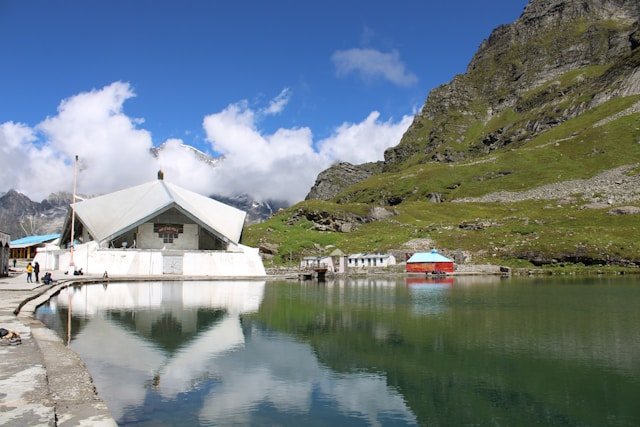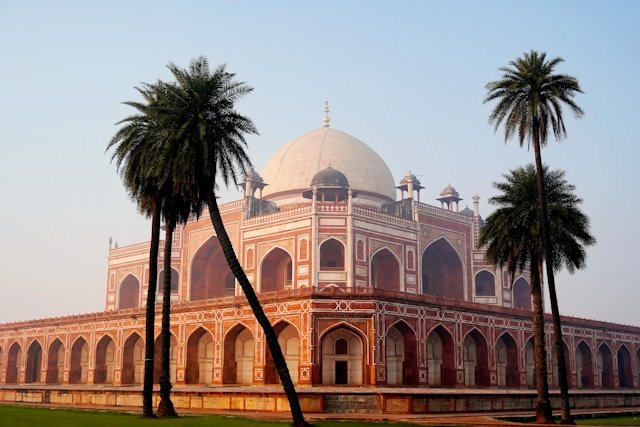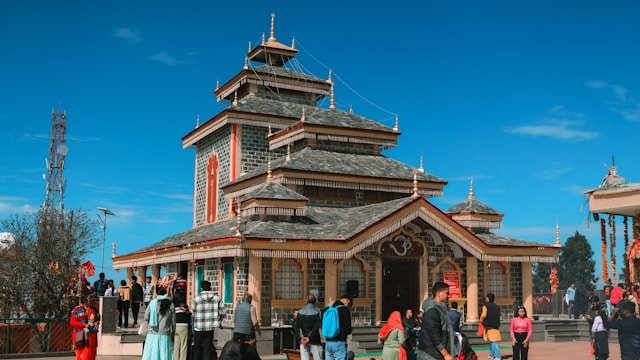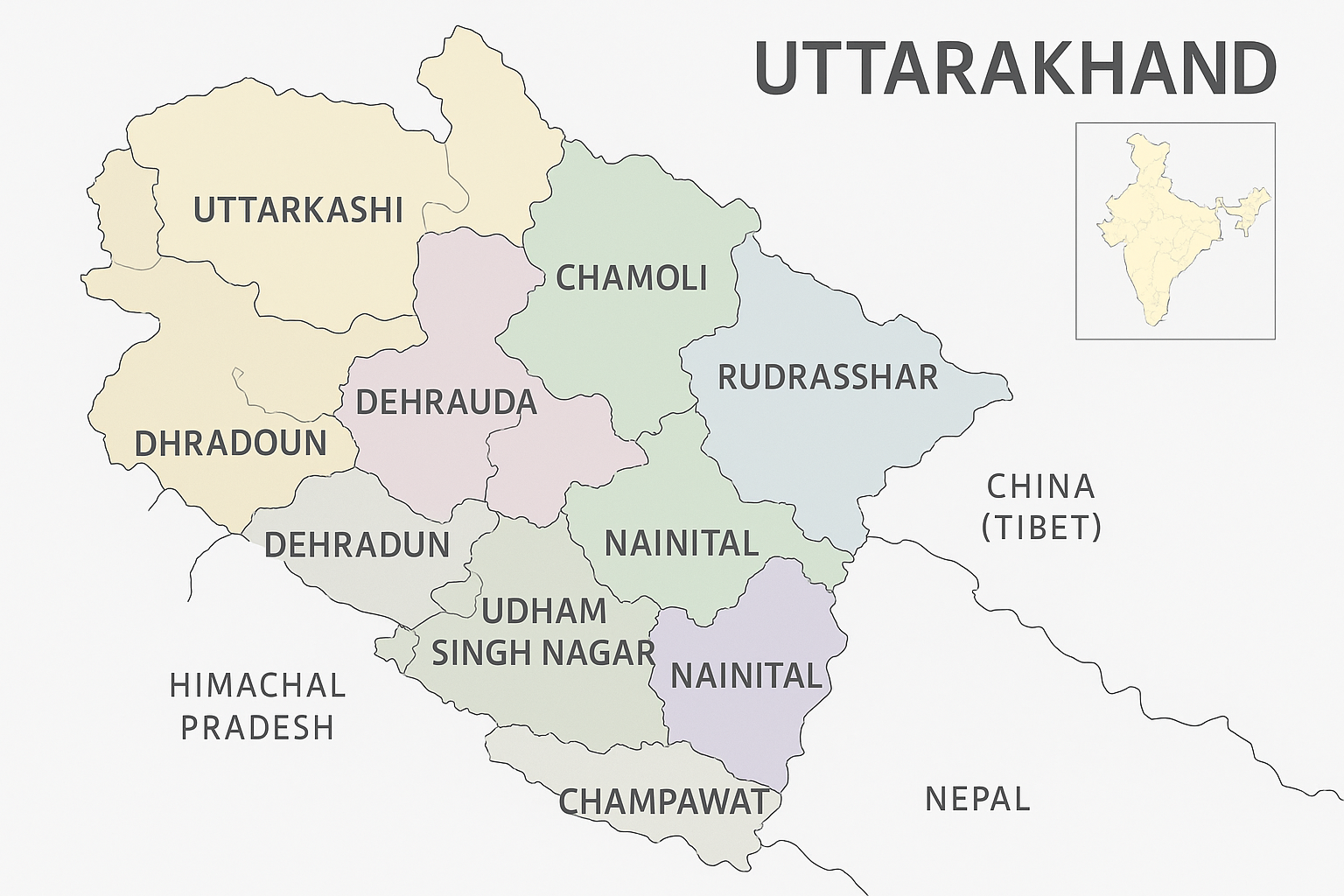Table of Contents
Introduction to Hemkund Sahib Distance

Hemkund Sahib, located in the picturesque Himalayas of Uttarakhand, serves as a significant pilgrimage site for Sikhs and travelers seeking spiritual solace amid nature’s beauty. The name “Hemkund” translates to “Lake of Ice,” reflecting the serene glacial lake that lies at an altitude of approximately 4,632 meters. This sacred destination is not just a site for worship but also a place imbued with breathtaking scenic vistas, which attract visitors from diverse backgrounds.
The history of Hemkund Sahib is deeply rooted in Sikhism, particularly through the revered figure of Guru Gobind Singh, the tenth Guru of the Sikhs. According to tradition, it is believed that he meditated at this tranquil location during his previous incarnation. The purpose of establishing a Gurudwara at this site was to commemorate his teachings and provide a place for devotees to reflect and connect with their faith.
Travelers are drawn to Hemkund Sahib for various reasons, including its spiritual significance, the chance to undertake a physically challenging trek, and the opportunity to immerse themselves in the stunning natural surroundings. The pilgrimage attracts thousands of visitors annually, especially during the summer months when the weather is more favorable for travel. The journey entails a trek that typically starts from Gobindghat, covering a distance of about 19 kilometers. Along the route, hikers are treated to magnificent views of flora and fauna, adding to the site’s allure.
In addition to its religious importance, Hemkund Sahib’s captivating landscape offers a unique chance for adventurers and nature enthusiasts to explore the pristine beauty of the Himalayas. The tranquil environment allows for self-reflection, making it a perfect retreat for those seeking peace and spiritual awakening amidst the majestic mountains.
The Distance from Delhi to Hemkund Sahib

The distance from Delhi to Hemkund Sahib, a revered pilgrimage site in the Indian state of Uttarakhand, varies depending on the chosen route. The most direct route is approximately 500 kilometers, roughly translating to about 310 miles. This journey primarily involves traveling via National Highway 44, which is well-maintained and provides a straightforward path to your destination.
For those who prefer a more scenic adventure, an alternative route through the hill stations of Dehradun can extend the journey to around 550 kilometers, or approximately 342 miles. This route not only enhances the travel experience with picturesque landscapes but also offers opportunities to explore various attractions en route. Popular stopping points include Mussoorie and Auli, making this option ideal for travelers interested in sightseeing.
Understanding the Route Options
Traveling from Delhi to Hemkund Sahib offers several transportation options, each catering to different preferences and schedules. One of the most popular methods is traveling by car. The distance from Delhi to Hemkund Sahib is approximately 500 kilometers. When driving, it is essential to consider the road conditions and traffic, particularly during peak seasons. The journey usually takes around 12 to 14 hours, depending on the route chosen and the duration of any breaks taken along the way. The route traverses the picturesque landscapes of Uttarakhand, providing a scenic drive that many travelers cherish.
For those who prefer a more relaxed approach, taking a bus may be an ideal choice. Several bus operators run services from Delhi to major towns en route to Hemkund Sahib, such as Rishikesh and Govindghat. Buses typically leave from various locations in Delhi, including ISBT Kashmiri Gate, and the travel time is roughly 14 to 16 hours, including the necessary stops. Opting for a bus allows passengers to sit back and enjoy the view without the stress of navigation, and overnight buses are available for those looking to maximize their travel time.
Additionally, traveling by train is another viable option. Several trains run between Delhi and Haridwar, which is the nearest major railway station to Hemkund Sahib. The train journey typically takes about 6 to 7 hours. Upon reaching Haridwar, travelers can use a combination of taxis or buses to complete the remaining distance to Govindghat, the starting point for the trek to Hemkund Sahib. This option does require careful planning, as connections between train services and road transport must be considered. Each of these travel methods has unique advantages, offering flexibility based on personal preferences and schedules.
Key Stops Along the Journey
The journey from Delhi to Hemkund Sahib is not only about reaching the destination but also enjoying the myriad experiences along the way. As travelers embark on this spiritual pilgrimage, several key stops can enhance their journey, making it memorable and enriching.
One of the first notable stops is Rishikesh, situated along the banks of the Ganges River. Popularly known as the “Yoga Capital of the World,” Rishikesh offers visitors a unique blend of spirituality and adventure. Travelers can indulge in yoga sessions, meditation, and even partake in thrilling activities such as white-water rafting. The scenic beauty, along with attractions like the Laxman Jhula and Tera Manzil Temple, makes Rishikesh a crucial waypoint on the route to Hemkund Sahib.
Continuing on the journey, the next prominent stop is Joshimath. Located in the Chamoli district, this town serves as a gateway to various important pilgrimage sites, including Badrinath. Travelers can take advantage of this stop to explore the ancient temples and soak in the picturesque vistas of the Himalayas. A visit to the Auli skiing destination, just a short drive from Joshimath, can add an adventurous twist to the journey.
As the journey continues, travelers will encounter several quaint villages and stunning landscapes, each contributing to the overall experience. The winding roads lead through serene forests and vibrant terraced fields, offering breathtaking views that leave a lasting impression. These enchanting stopovers not only provide essential breaks during the drive but also foster a deeper connection with the rich culture and natural beauty of the region.
Ultimately, making these stops en route from Delhi to Hemkund Sahib enhances the pilgrimage experience, allowing travelers to immerse themselves in the spiritual, cultural, and natural offerings of each location before reaching their final destination.
Traveling by Road: Detailed Route Description
Traveling by road from Delhi to Hemkund Sahib is an enriching experience that combines scenic beauty with a sense of adventure. The distance between these two points is approximately 500 kilometers, and the journey typically takes around 12 to 14 hours, depending on road conditions and the chosen route. The most common route involves taking the NH 44 toward Haridwar, a bustling city known for its religious significance as well as the Ganges River’s riverside views.
As you leave Delhi, prepare to encounter the busy metropolitan traffic, which eases considerably once you reach the outskirts. Continuing on NH 44, travelers can enjoy the rolling landscapes and fields that typify the northern states of India. One notable point of interest during this segment is the scenic surroundings of Meerut and Muzaffarnagar, where lush green fields set against the backdrop of the Himalayas create a picturesque view.
After navigating through Haridwar, the journey shifts as you take the route via Rishikesh. This portion of the trip is famously tranquil, characterized by the Ganges river flowing alongside the road, invigorating the air with a light mist. Once past Rishikesh, head towards Srinagar followed by Chamoli and you will begin to notice the dramatic shift in topography as the terrain transitions into mountainous regions. Road conditions become more challenging as the gradient rises; therefore, it is advisable to be cautious, especially during rainy seasons when landslides can occur.
Before reaching Hemkund Sahib, the final phase involves navigating via Govindghat. This stretch is both arduous and rewarding, as it leads towards the sacred lakeside destination surrounded by captivating landscapes. Ensure that your vehicle is well-maintained and fueled up, as this segment can include long stretches without facilities. Carrying ample water and snacks is also recommended for a comfortable journey. The entire drive offers a tapestry of breathtaking views that enhance the travel experience significantly.
Traveling by Train: The Rail Route Explained
Traveling to Hemkund Sahib by train is a convenient option for many pilgrims and tourists. The nearest major railway station to Hemkund Sahib is Rishikesh, which is approximately 270 kilometers away. Rishikesh Railway Station serves as a critical hub with frequent connections to major cities such as Delhi, Haridwar, and Dehradun. Various train services, including the Shatabdi Express, Jan Shatabdi, and several overnight trains, operate on this route, offering a range of travel options suitable for different preferences and budgets.
Once you arrive at Rishikesh, you can easily find connecting transport to further your journey towards Hemkund Sahib. The primary route involves traveling to Govindghat, which is the nearest road access point to Hemkund Sahib. From Rishikesh, you can opt for a bus or hire a taxi to reach Govindghat. The road journey to Govindghat offers breathtaking views of the Himalayan landscape, enhancing your travel experience.
It’s advisable to check train schedules and book tickets in advance, especially during peak pilgrimage seasons, as the demand tends to be significantly higher. The official Indian Railways website and various travel booking platforms provide real-time schedules and ticket availability, making the booking process seamless. Passengers can also explore options like Tatkal bookings for last-minute travel needs.
Upon your arrival in Govindghat, a trek of approximately 13 kilometers along a well-marked trail awaits you, leading directly to Hemkund Sahib. This trek, while requiring a moderate level of fitness, is a popular choice among devotees and offers a chance to experience the natural beauty of the region. Overall, utilizing the train route to reach Hemkund Sahib provides a scenic and culturally enriching journey.
Best Time to Visit Hemkund Sahib
Choosing the optimal time to visit Hemkund Sahib is crucial for an enjoyable pilgrimage experience. The best months to plan your trip are typically from late May to early October. During this period, the weather is generally pleasant, with daytime temperatures averaging between 10°C and 20°C. This window not only ensures favorable weather conditions but also aligns with the peak pilgrimage season when devotees from various parts of India and abroad visit the sacred site.
In late May, Hemkund Sahib’s access becomes more feasible as the snow has begun to melt, making the trek more accessible for pilgrims and tourists alike. Additionally, visiting during this time allows travelers to witness the blooming flora of the region, providing a breathtaking backdrop for the journey. The weather is characterized by mild daytime temperatures and cool evenings, enhancing the overall pilgrimage experience.
As the summer transitions into the monsoon season, June and July can bring heavy rainfall, which might pose challenges for travelers. Although this does not deter many devotees, it is advisable to check weather forecasts before planning your visit. Generally, August offers a respite from heavy rains, providing a good opportunity to experience the serene atmosphere at Hemkund Sahib.
September marks the beginning of the autumn season when the temperatures begin to drop, leading towards the end of the pilgrimage season. This period can be a tranquil time to visit, with fewer crowds and clearer skies. Additionally, witnessing the first signs of autumn can be quite picturesque.
In conclusion, the best time to visit Hemkund Sahib is during the summer months until early autumn, aligning your trip with favorable weather and local religious activities. This will ensure a fulfilling pilgrimage experience in this sacred destination.
Tips for Travelers: What to Expect
Traveling to Hemkund Sahib presents a unique and enriching experience, but being well-prepared is essential for ensuring a smooth journey. One of the primary considerations for travelers is to pack wisely. Essential items include comfortable trekking shoes, warm clothing, and layered outfits, as temperatures can drop significantly, especially during the evenings. Rain gear is also advisable, as the region can experience sudden rainfall, particularly during the monsoon season. Additionally, don’t forget personal hygiene items, a first-aid kit, and any necessary medications, as access to facilities may be limited.
Acclimatization is crucial when visiting Hemkund Sahib, which is situated at an impressive altitude of 4,632 meters above sea level. It is advisable to take things slow upon arrival and allow your body to adjust. Spending an extra day in lower altitude areas during your journey can greatly assist in reducing the risk of altitude sickness. Stay hydrated and consider consuming light meals rich in carbohydrates to aid acclimatization. Scenic stops along the way are not only enjoyable but also offer natural breaks to help your body adapt to the elevation.
Cultural etiquette is another important aspect to be mindful of during your visit. Hemkund Sahib is a revered pilgrimage site for many, so it’s essential to approach it with respect. Visitors should dress modestly, ensuring that clothing is appropriate for the sacred surroundings. Photography may be restricted in certain areas, especially inside the Gurdwara, so it’s wise to ask for permission where necessary. Additionally, be prepared to observe customs such as removing shoes before entering sacred spaces and maintaining silence in prayer areas. By embracing these practices, travelers can show their respect for the rich cultural and spiritual significance of Hemkund Sahib.
Embracing the Journey to Hemkund Sahib
Traveling from Delhi to Hemkund Sahib is more than merely covering a distance; it is about engaging in a transformative journey that combines spirituality, natural beauty, and personal reflection. As outlined in this guide, the route to Hemkund Sahib offers a diverse experience, from the bustling energy of Delhi to the serene landscapes of the Himalayas. Each phase of this journey reveals breathtaking vistas, peaceful environments, and opportunities for introspection that enrich the travel experience.
In considering the various transport options available—from train travels that immerse you in picturesque surroundings to the scenic road trips through winding mountain routes—travelers are afforded a unique glimpse into the different facets of India. As you plan your journey, recognizing the significance of each moment spent en route can enhance your appreciation for the experience of pilgrimage. The physical distance from Delhi to Hemkund Sahib can often feel secondary to the spiritual and psychological growth encountered along the way.
Moreover, the inclusion of tips for acclimatization, trekking preparation, and cultural insights emphasizes the holistic approach required for making this pilgrimage meaningful. Encouraging travelers to connect with the locals, partake in traditional cuisines, and explore the area’s rich heritage fosters a deeper understanding of the destination. Ultimately, the journey to Hemkund Sahib is not just a transit from one location to another; it is an expedition that invites individuals to feel the serenity and tranquility that characterize the region.
As you finalize your plans, remember that the goal is to cherish both the journey and the arrival. Whether it is a peaceful moment of reflection by the lake or rejoicing in the company of fellow travelers, each element contributes to a holistic experience that transcends traditional travel. Embrace the journey to Hemkund Sahib, and allow it to enrich your spirit and broaden your horizons.




Leave a Reply to Outdoor Trek India Cancel reply